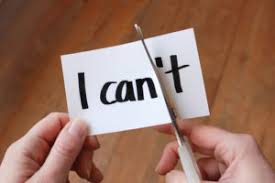A post-lockdown repair kit
Catching up on learning lost to Covid-19 lockdowns presents schools and teachers with a real strategic challenge. This is going to take time. And not just time: countering the effects of lockdown’s disruption of life and learning will be vital.
 Suppose we could boost and nurture children’s resilience as learners: that, surely, would greatly improve the chances of our, and their, success.
Suppose we could boost and nurture children’s resilience as learners: that, surely, would greatly improve the chances of our, and their, success.
Here, resilience in learning means a child’s tendency to be ready, willing and able to lock onto learning — working through difficulties when the going gets tough, sticking (or quickly returning) to tasks in the face of distractions, enjoying the learning chase and understanding how they can take effective part in it.
The good news is that it is quite possible to adjust classroom practice so that we do develop this kind of resilience in children, systematically and consistently over time. The online ‘Re-energising’ resource package supports a school in doing this. It treats four key aspects of resilience:
- Unsticking learning, equipping pupils with the strategies to keep going when the going gets tough
- Managing distractions, enabling pupils to manage their own learning environment
- Rising to challenge, encouraging pupils to relish tackling work that they find challenging
- Achieving goals, equipping students to develop and pursue goals with tenacity.
More about unsticking
Being able to get ourselves unstuck is as much about how we react emotionally as it is about having the practical strategies to work out how to overcome it. Being able to manage an effective way out of being stuck is a critical part of resilience.
More about managing distractions
More about challenge
More about goals
The world of the classroom is most often about externally set goals or targets or success criteria or objectives. Whatever the word the way in which they are viewed is as something that is given, required by someone or something else. They are not our goals or standards and if we are unable to adopt these as our own, we will forever be dancing to someone else’s tune, pursuing an agenda in which we have little interest
The Re-energising resource package
Who for? … Schools wanting to ensure students rebuild their willingness to lock back on to learning.
When?… Now!
Why? … Provides every member of staff with ideas to help students build their habits of resilience.
How? … Online resource kit with loads of accessible, practical ideas for all ages; it lasts for years.
The majority of the resource is organised round the key aspects identified above, in four main sections.
Each section provides:
- a view of the kind of practice to aim for
- questionnaires to establish the current state of play
- what ‘getting better’ at this aspect of resilience looks like
- 25+ practical ideas for helping students to help themselves engage more strongly
- a nudge to make a few valuable changes in classroom practice
Designed to be available to every teacher, the resource is accessible online at any time of day. It offers a consistent school-wide approach to developing students’ emotional learning behaviours, and:
- Ensures the culture of the classroom is learning-friendly
- Focuses on gradual change
- Builds common expertise right across the school
- Ensures you build emotionally robust students RIGHT not LITE
- Could be a basis for professional development activities throughout a year
Click here for purchasing details

Comments are closed.